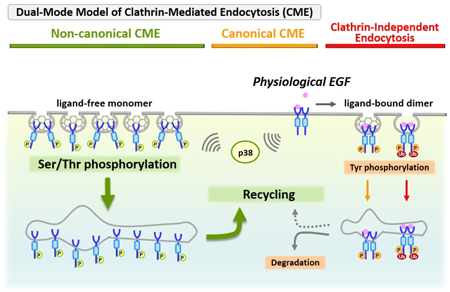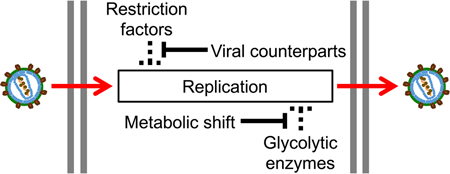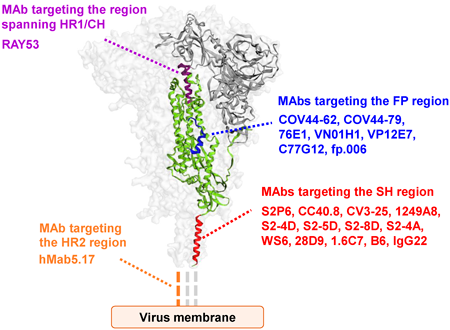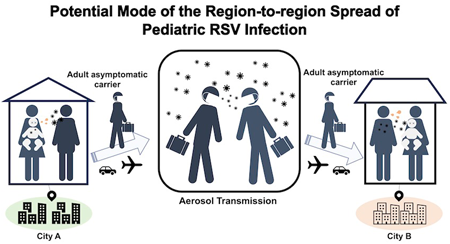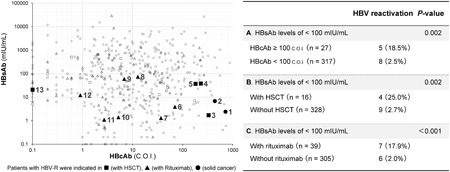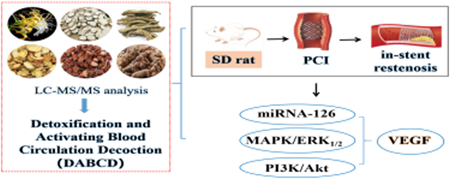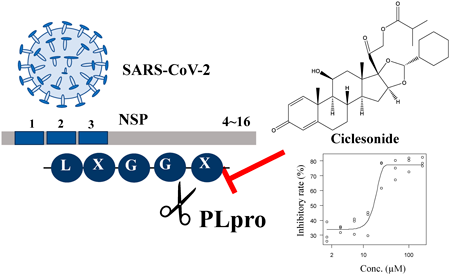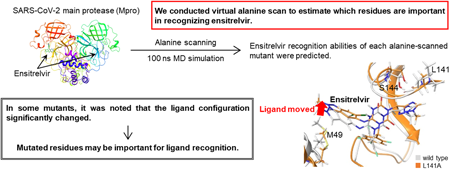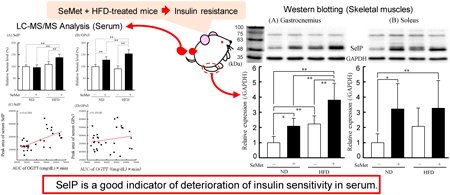- |<
- <
- 1
- >
- >|
-
2024Volume 47Issue 5 Pages 878-885
Published: May 01, 2024
Released on J-STAGE: May 01, 2024
Download PDF (4984K) Full view HTML -
2024Volume 47Issue 5 Pages 886-894
Published: May 01, 2024
Released on J-STAGE: May 01, 2024
Download PDF (4706K) Full view HTML -
 2024Volume 47Issue 5 Pages 895-903
2024Volume 47Issue 5 Pages 895-903
Published: May 01, 2024
Released on J-STAGE: May 01, 2024
Editor's pickSince the first report of epidermal growth factor (EGF) in 1962, research on intracellular signaling through its receptor EGFR has greatly advanced. While the canonical activation of EGFR via tyrosine phosphorylation is well understood, the existence of a non-canonical activation via p38-dependent phosphorylation of serine/threonine residues has recently attracted attention. The authors have found that both of these mechanisms occur in parallel and are now analyzing them as a dual-mode activation model. This review summarizes new advances in EGFR signaling research and the latest status of EGFR inhibitor development for molecular targeted therapy of lung cancer.
Download PDF (2179K) Full view HTML
-
2024Volume 47Issue 5 Pages 904
Published: May 01, 2024
Released on J-STAGE: May 01, 2024
Download PDF (178K) Full view HTML
-
 2024Volume 47Issue 5 Pages 905-911
2024Volume 47Issue 5 Pages 905-911
Published: May 01, 2024
Released on J-STAGE: May 01, 2024
Editor's pickHuman immunodeficiency virus type 1 (HIV-1) hijacks various cellular machinery to achieve efficient replication. HIV-1 infection induces a metabolic shift towards aerobic glycolysis as a cellular response to maintain homeostasis, yet the virus continues to replicate efficiently under these conditions. In this review, the authors introduce the regulatory role of glycolytic enzymes in HIV-1 replication and the impact of aerobic glycolysis on viral infection. In addition, the authors propose a novel strategy to eradicate latently HIV-1-infected cells.
Download PDF (958K) Full view HTML -
2024Volume 47Issue 5 Pages 912-916
Published: May 01, 2024
Released on J-STAGE: May 01, 2024
Download PDF (764K) Full view HTML -
2024Volume 47Issue 5 Pages 917-923
Published: May 01, 2024
Released on J-STAGE: May 01, 2024
Download PDF (814K) Full view HTML
-
2024Volume 47Issue 5 Pages 924-929
Published: May 01, 2024
Released on J-STAGE: May 01, 2024
Download PDF (3313K) Full view HTML -
2024Volume 47Issue 5 Pages 930-940
Published: May 01, 2024
Released on J-STAGE: May 01, 2024
Download PDF (7523K) Full view HTML
-
2024Volume 47Issue 5 Pages 941-945
Published: May 10, 2024
Released on J-STAGE: May 10, 2024
Download PDF (426K) Full view HTML
-
2024Volume 47Issue 5 Pages 946-954
Published: May 13, 2024
Released on J-STAGE: May 13, 2024
Download PDF (3901K) Full view HTML -
2024Volume 47Issue 5 Pages 955-964
Published: May 15, 2024
Released on J-STAGE: May 15, 2024
Advance online publication: April 20, 2024Download PDF (7873K) Full view HTML
-
2024Volume 47Issue 5 Pages 965-966
Published: May 17, 2024
Released on J-STAGE: May 17, 2024
Download PDF (337K) Full view HTML
-
2024Volume 47Issue 5 Pages 967-977
Published: May 17, 2024
Released on J-STAGE: May 17, 2024
Download PDF (5833K) Full view HTML -
 2024Volume 47Issue 5 Pages 978-987
2024Volume 47Issue 5 Pages 978-987
Published: May 18, 2024
Released on J-STAGE: May 18, 2024
Advance online publication: April 18, 2024Editor's pick[Highlighted Paper selected by Editor-in-Chief]
Nonalcoholic steatohepatitis (NASH) is a serious form of nonalcoholic fatty liver disease (NAFLD) that can lead to liver damage and inflammation. In this study, the authors focused on the therapeutic effects of emodin succinyl ethyl ester (ESEE) on NASH using a murine model induced by Special tailored diet. After four weeks of ESEE treatment, researchers observed significant improvements in glycolipid metabolism disorders, liver injury, and histopathological features of NAFLD/NASH. ESEE showed effectiveness in reducing cellular steatosis, inflammation, fat deposition in hepatocytes, and liver fibrosis in the model mice. These findings suggest that ESEE could serve as a novel therapeutic agent for NASH, providing protection against diet-induced liver abnormalities and injuries.Download PDF (6584K) Full view HTML
-
2024Volume 47Issue 5 Pages 988-996
Published: May 18, 2024
Released on J-STAGE: May 18, 2024
Download PDF (379K) Full view HTML -
2024Volume 47Issue 5 Pages 997-999
Published: May 21, 2024
Released on J-STAGE: May 21, 2024
Download PDF (345K) Full view HTML
-
2024Volume 47Issue 5 Pages 1000-1007
Published: May 21, 2024
Released on J-STAGE: May 21, 2024
Download PDF (4100K) Full view HTML -
2024Volume 47Issue 5 Pages 1008-1020
Published: May 24, 2024
Released on J-STAGE: May 24, 2024
Download PDF (19423K) Full view HTML
-
 2024Volume 47Issue 5 Pages 1021-1027
2024Volume 47Issue 5 Pages 1021-1027
Published: May 24, 2024
Released on J-STAGE: May 24, 2024
Editor's pickExposure of animals to the enriched environments improves memory consolidation that requires extracellular ripples generated in the hippocampus during sleep. Natural sleep and general anesthesia are similar in terms of extracellular oscillations. However, whether the preexposure of animals to the enriched environment modulates neural activity in the hippocampus under subsequent anesthesia is not fully understood. The authors allowed mice to explore the enriched or standard environment, anesthetized them, and recorded local field potentials in the hippocampus, demonstrating that the amplitude of ripples and the number of successive ripples were larger in the novel enriched environment group.
Download PDF (2036K) Full view HTML
-
2024Volume 47Issue 5 Pages 1028-1032
Published: May 24, 2024
Released on J-STAGE: May 24, 2024
Download PDF (1149K) Full view HTML -
2024Volume 47Issue 5 Pages 1033-1042
Published: May 25, 2024
Released on J-STAGE: May 25, 2024
Download PDF (6793K) Full view HTML -
2024Volume 47Issue 5 Pages 1043-1053
Published: May 28, 2024
Released on J-STAGE: May 28, 2024
Download PDF (4847K) Full view HTML
-
2024Volume 47Issue 5 Pages 1054-1057
Published: May 28, 2024
Released on J-STAGE: May 28, 2024
Download PDF (472K) Full view HTML
-
2024Volume 47Issue 5 Pages 1058-1065
Published: May 31, 2024
Released on J-STAGE: May 31, 2024
Download PDF (5436K) Full view HTML
- |<
- <
- 1
- >
- >|



